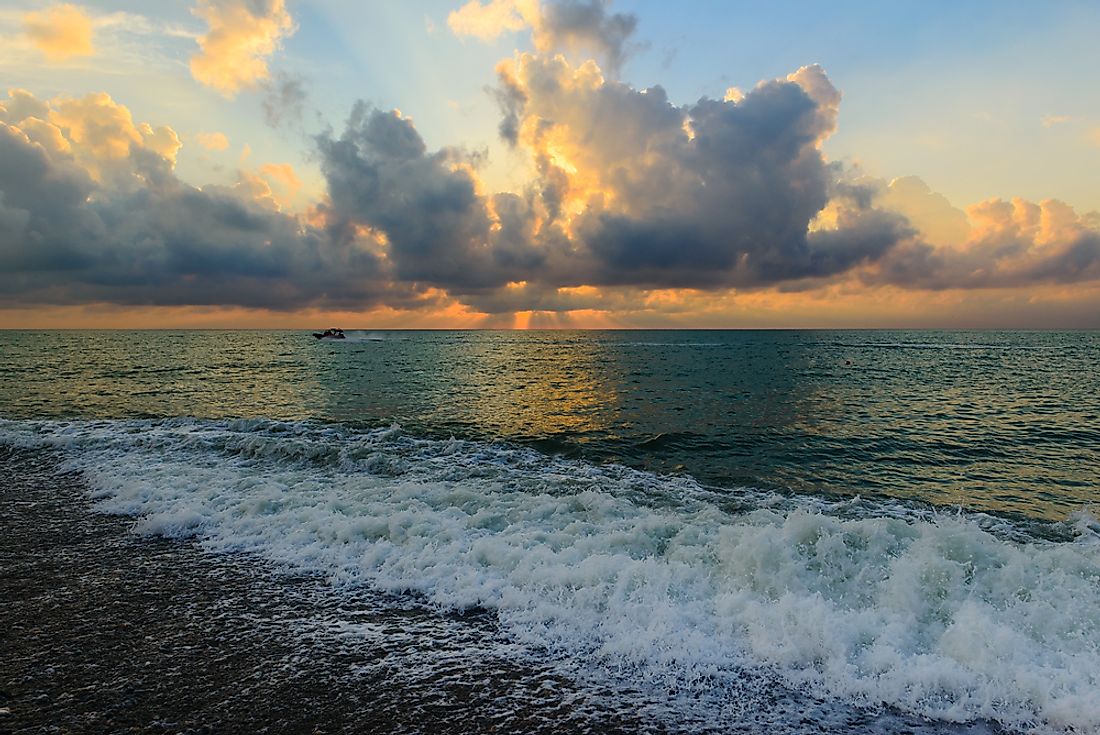Where Was The Tethys Ocean Located?

Suppose Eurasia existed without the Alps, Caucasia, and the Arabian Peninsula, and that southern Europe and a broad strip of North Africa were completely submerged underwater. Additionally, what if Africa was very much apart from Eurasia, and that the known seas do not exist because they form one large ocean? Then, someone would easily travel from the western Mediterranean across the Black Sea into the Indian Ocean through the Pacific Gulf. That was all the Tethys Ocean. Tethys allowed the oceans of the world to converge near the equator instead of the Atlantic and Indian Oceans being separated from one another by the continent of Africa. The Tethys Ocean is a well-known ocean of the Mesozoic era (between 250 and 65 million years ago) and was situated between the old continents of Gondwana and Laurasia.
Naming The Ocean
The Tethys Ocean is named after the mythological Greek Sea Goddess known as Tethys, who is a sister and consort of Oceanus. Oceanus is the mother of world’s great water bodies such as rivers, lakes, and fountains. The eastern part of the ocean is often referred to as the Eastern Tethys while the western part is referred to as the Tethys Sea. The Black Sea is thought to be the remains of the Paleo-Tethys Ocean while the Caspian and Aral are thought to be its crustal remains. The Mesozoic era flooded most of the continental domains leading to the formation of shallow seas. With the theory improvements, Tethys has been extended to refer to three similar oceans that preceded it. These seas include Paleo-Tethys, Meso-Tethys, and Ceno-Tethys.
Theories
Two major Tethyan seas are thought to have occupied the region between Laurasia and Gondwana successively in the Mesozoic era. One of the seas was the Paleo, also known as the Old Sea, and was formed when all landmasses joined together creating a large continent known as Pangea during the Paleozoic era (over 300 million years ago). In the period of the Permian and Triassic, Paleo-Tethys lead to the creation of the embayment of Pangea towards the east, that is now referred to as the Mediterranean area. In the early Jurassic period, the Paleo-Tethys Ocean was eliminated when the Cimmerian continent broke away from northern Gondwana.
The second sea, known as the Neo-Tethys Sea, also the Tethys or Tethys Sea, formed in the start of the rotation of the Cimmerian continent, in the early Mesozoic era. The disintegration of the Pangea continent into Laurasia and Gondwana during the Jurassic period led to the continuous enlarging of the Tethys into an important seaway in the Mesozoic era. The area between the continents was filled with a large volume of water, connecting the major oceans. The Tethys Seaway enlarged and merged with the other northward seaways.
If the Tethys Ocean Existed Today
Today, India, Pakistan, Indonesia, and the Indian Ocean form the area that was once covered by the Tethys Ocean. Tibet and Iraq cover what was known as the Cimmerian. The Mediterranean Sea originated from what was the western arm of the Tethys. Other remains of the Tethys Sea include the Black Sea, Aral, and the Caspian. The floor of the Tethys Sea was absorbed under the Cimmeria and Laurasia.











